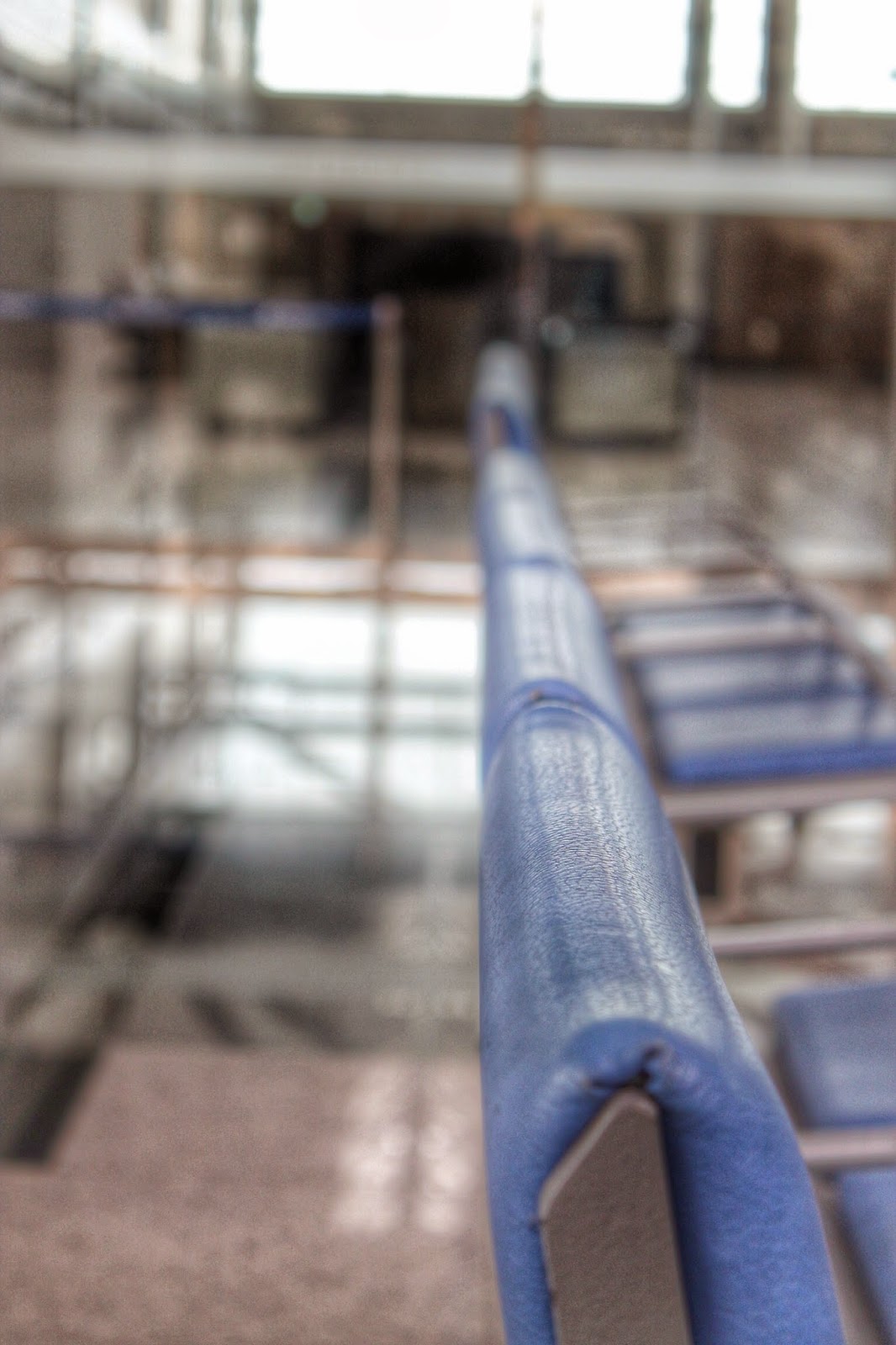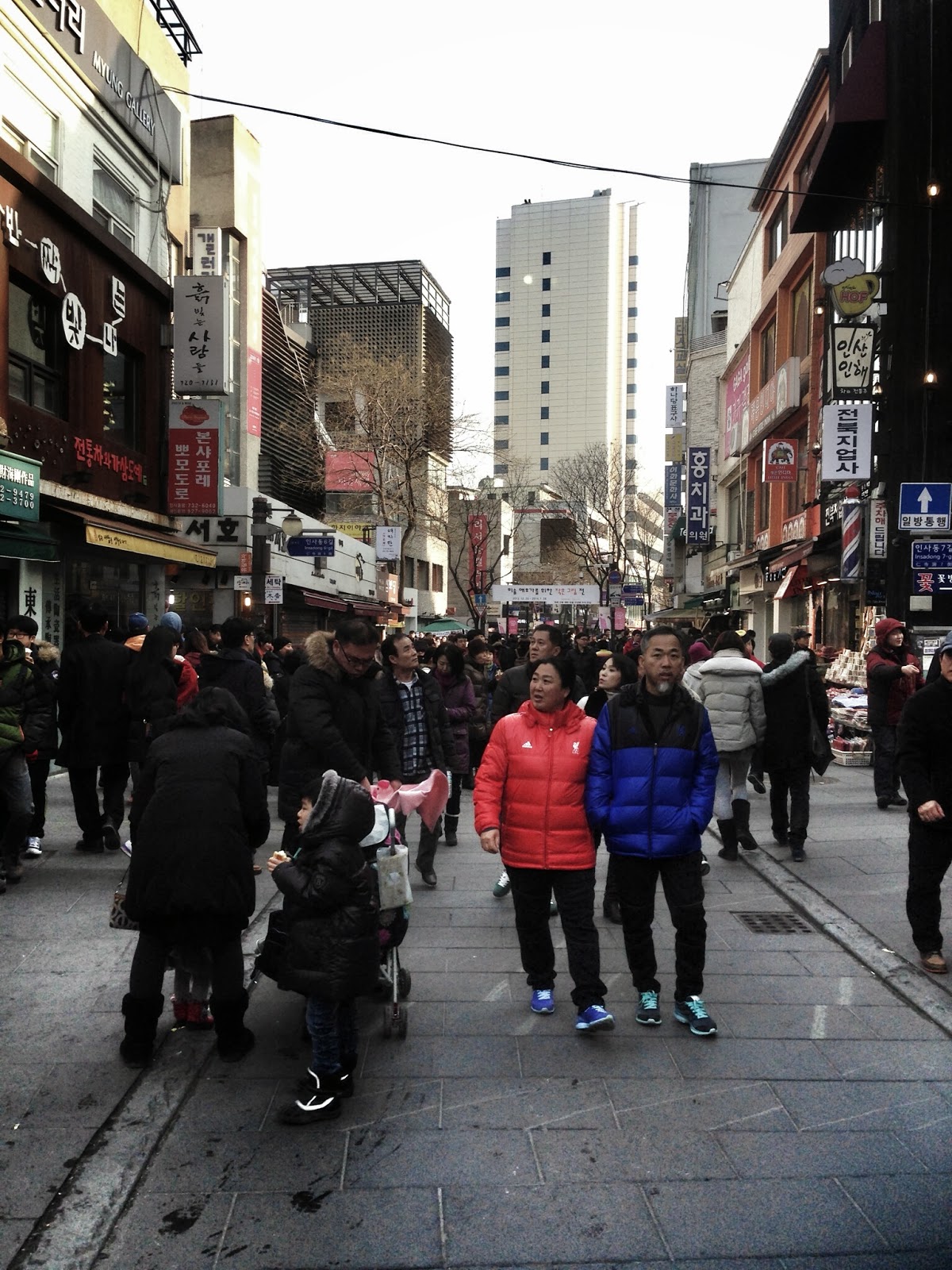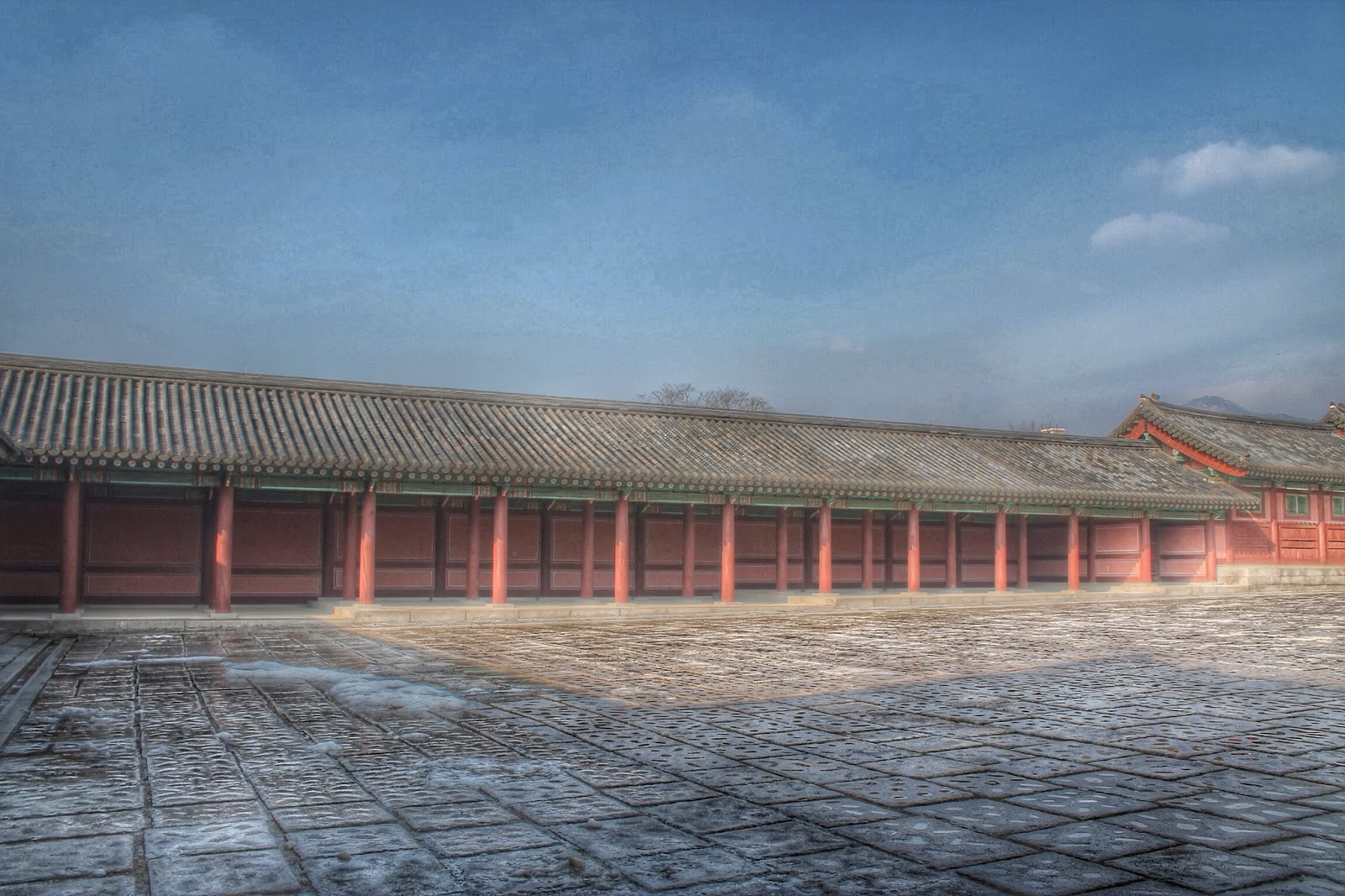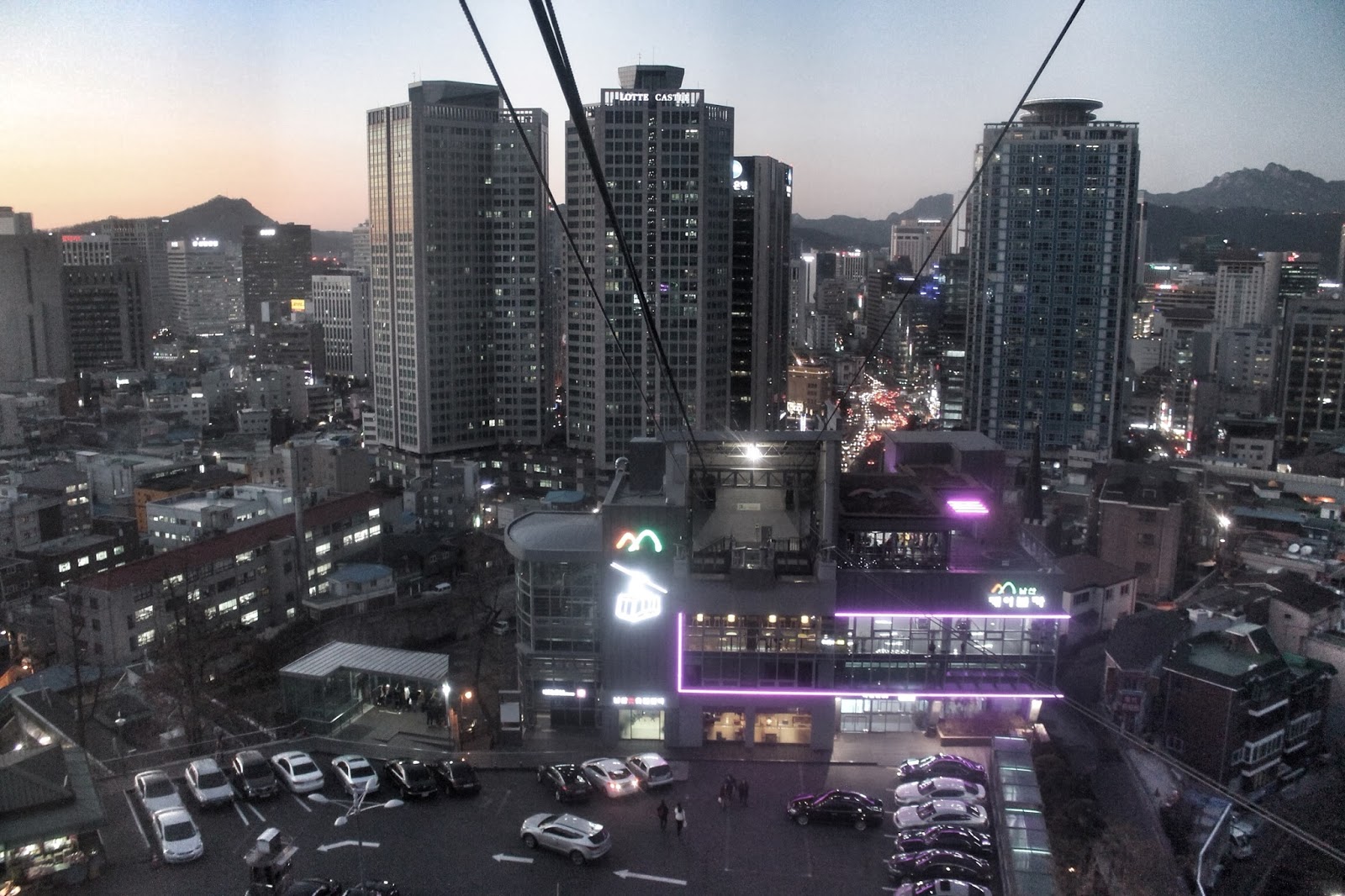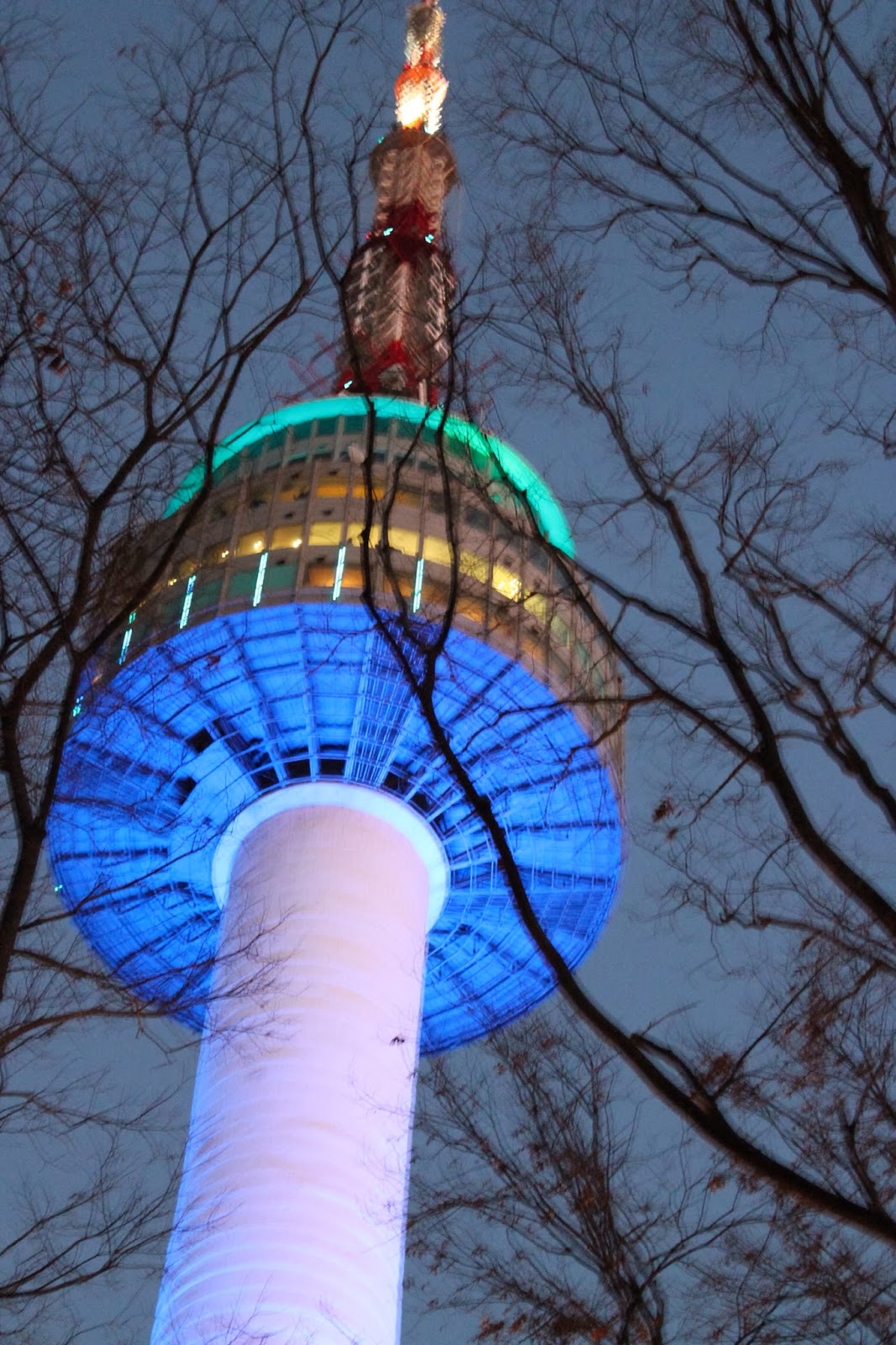I was surprised by how close the DMZ is to Seoul. I expected it to be a few hour drive but really, we were crossing into the DMZ no more than 45 minutes after we jumped on the bus.
Even more of a surprise was the barbed wire fences lining the Han River right outside Seoul. At first, I couldn’t see the river from the highway and thought we were passing a prison, but later learned the fences were put up over forty years ago to stop North Korean infiltrators from entering the South.
It’s really interesting how life goes on like normal in South Korea when the most heavily militarized border in the world is just 35 miles away from the capital city. It’s easy enough to forget that when you’re exploring the city, but there are some reminders.
Anyone can drive onto the DMZ, as long as they get military clearance. I went on a tour through the USO so they did all the clearance before we got on the bus and we didn’t need to stop.
 |
| The bridge crossing into the DMZ |
The first stop was the Third Infiltration Tunnel. When we first stepped off the bus I felt like we were in a major tourist attraction. There were huge signs and statues and even a gift shop.
South Koreans discovered four tunnels dug by North Korea into the DMZ. The first was discovered in 1974 and the fourth was discovered in 1990 and there are most likely at least twenty others that haven’t been found yet.
Once in the building we had to leave all our belongings in lockers, grab a hard hat, and walk down a long, steep tunnel before even getting into the actual Third Infiltration Tunnel.
 |
| The tunnel before the tunnel |
Unfortunately, no pictures were allowed so I’ll do my best to describe what it was like. Once down in the tunnel, it was really dark and wet. The path is about five feet wide, but it pretty low, I had to duck down a lot so I wouldn’t hit my head on the rocks. The tunnels could carry 300 soldiers traveling from the North entrance to the South exit in under an hour. The rocks were painted black because the North Koreans claimed they dug the tunnels for coal mining. Of course, there was no coal found but plenty of dynamite marks.
 |
| A tram that takes some visitors straight to the entrance of the tunnel |
At the end of the tunnel there are three walls. Between the first two is pure concrete and between the second and third is a huge water tank so if the north bombed it they would be flooded. There is CCTV all the way throughout the tunnel and a guard at the end of the tunnel 24/7. Once we walked to the end of the tunnel, there was a hole in the wall that we could see the water tank and the guard.
It seems like this post was too long to send out in emails so I had to split it up. You can view Part 2 here



























